Demolition Contractors Blacklick Estates
Top 10 Demolition Contractors in Blacklick Estates
Receive up to 3 Demolition Contractor quotes for your project today! Compare profiles, reviews, accreditations, portfolio, etc... and choose the best deal.
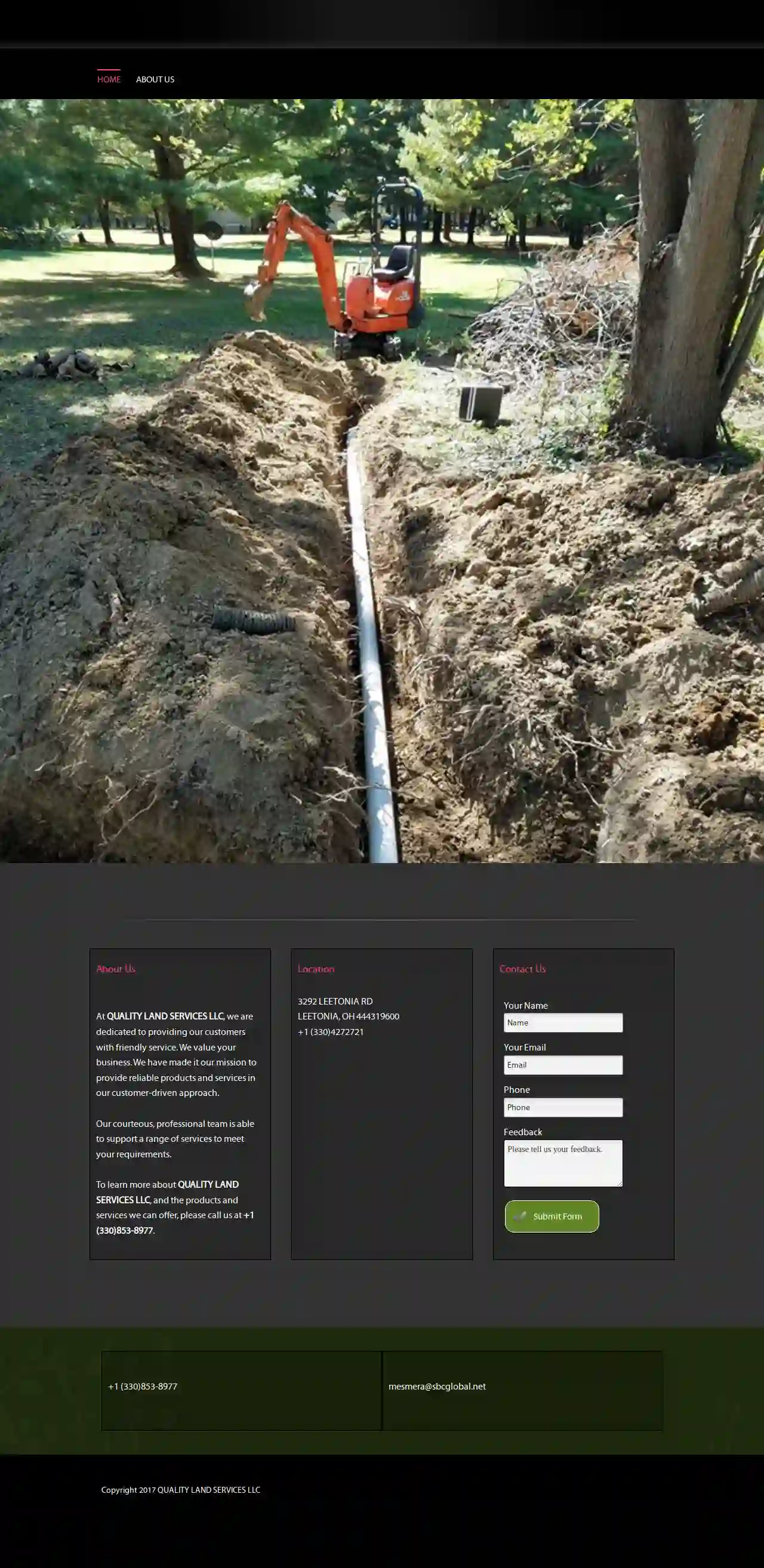
Quality Excavating
3.52 reviews3292 LEETONIA RD, LEETONIA, 44431, USAt QUALITY LAND SERVICES LLC, we are dedicated to providing our customers with friendly service. We value your business. We have made it our mission to provide reliable products and services in our customer-driven approach. Our courteous, professional team is able to support a range of services to meet your requirements. To learn more about QUALITY LAND SERVICES LLC, and the products and services we can offer, please call us at +1 (330)853-8977.
- Services
- Why Us?
- Gallery
Get Quote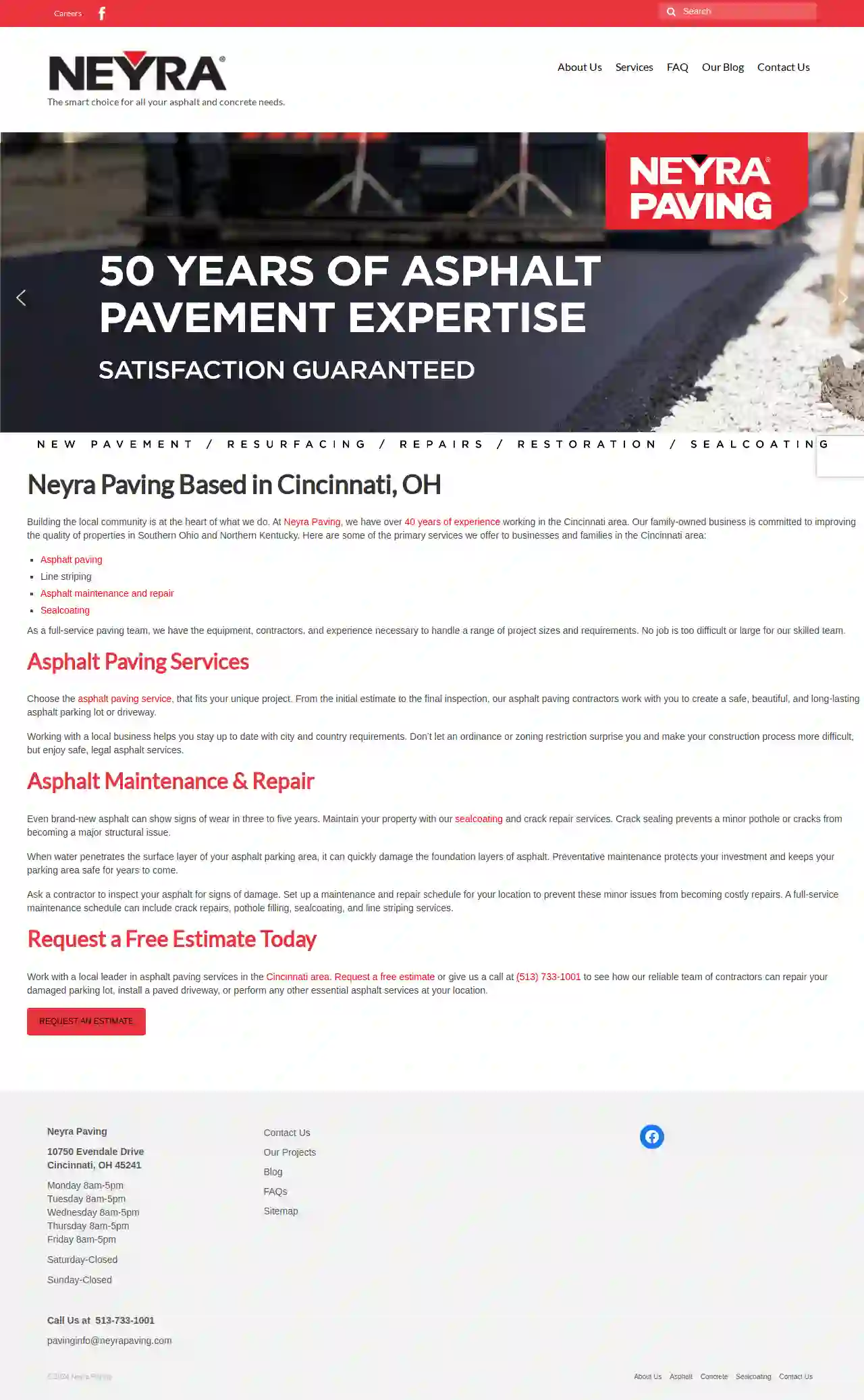
Neyra Paving
4.19 reviews10750 Evendale Drive, Cincinnati, 45241, USAbout Neyra Paving Neyra Paving is a family-owned business with over 40 years of experience serving the Cincinnati area. We are dedicated to providing high-quality asphalt and concrete paving and repair services to businesses and families in Southern Ohio and Northern Kentucky. Our commitment to quality craftsmanship and superior customer service is evident in every project we undertake, no matter how big or small. We understand that building the local community is at the heart of what we do. That's why we strive to provide our clients with the best possible experience, from the initial estimate to the final inspection. We are committed to working with you to create a safe, beautiful, and long-lasting asphalt parking lot or driveway. As a full-service paving team, we have the equipment, contractors, and experience necessary to handle a range of project sizes and requirements. No job is too difficult or large for our skilled team.
- Services
- Why Us?
- Gallery
Get Quote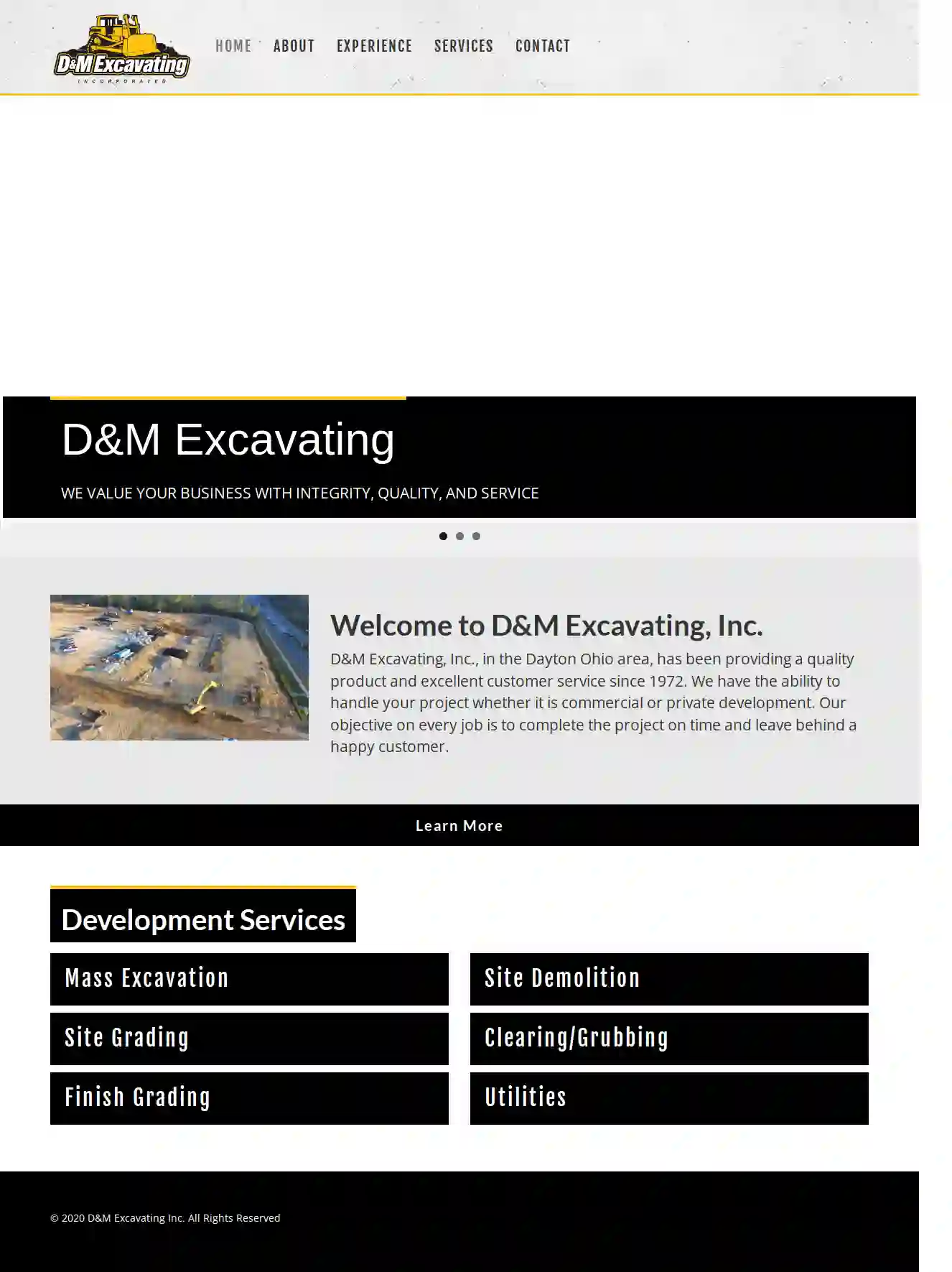
D & M Excavating Inc
4.47 reviews9465 State Route 202, Tipp City, 45371, USAbout D&M Excavating, Inc. D&M Excavating, Inc., serving the Dayton Ohio area, has been providing quality products and excellent customer service since 1972. We have the expertise to handle your project, whether it's commercial or private development. Our commitment on every job is to complete the project on time and leave behind a happy customer. D&M Excavating, Inc. has been in business for over 40 years. During this time, we have worked primarily in the Miami Valley on a large variety of projects for many customers while maintaining relationships with several repeat customers. We are large enough to handle most any project but remain small enough that our owners get to each job daily to check on progress and resolve any problems that may arise. We recognize that leaving the job with a satisfied client is the only way to remain in business. Our many repeat customers are proof of the good impression we leave after every job.
- Services
- Why Us?
- Gallery
Get Quote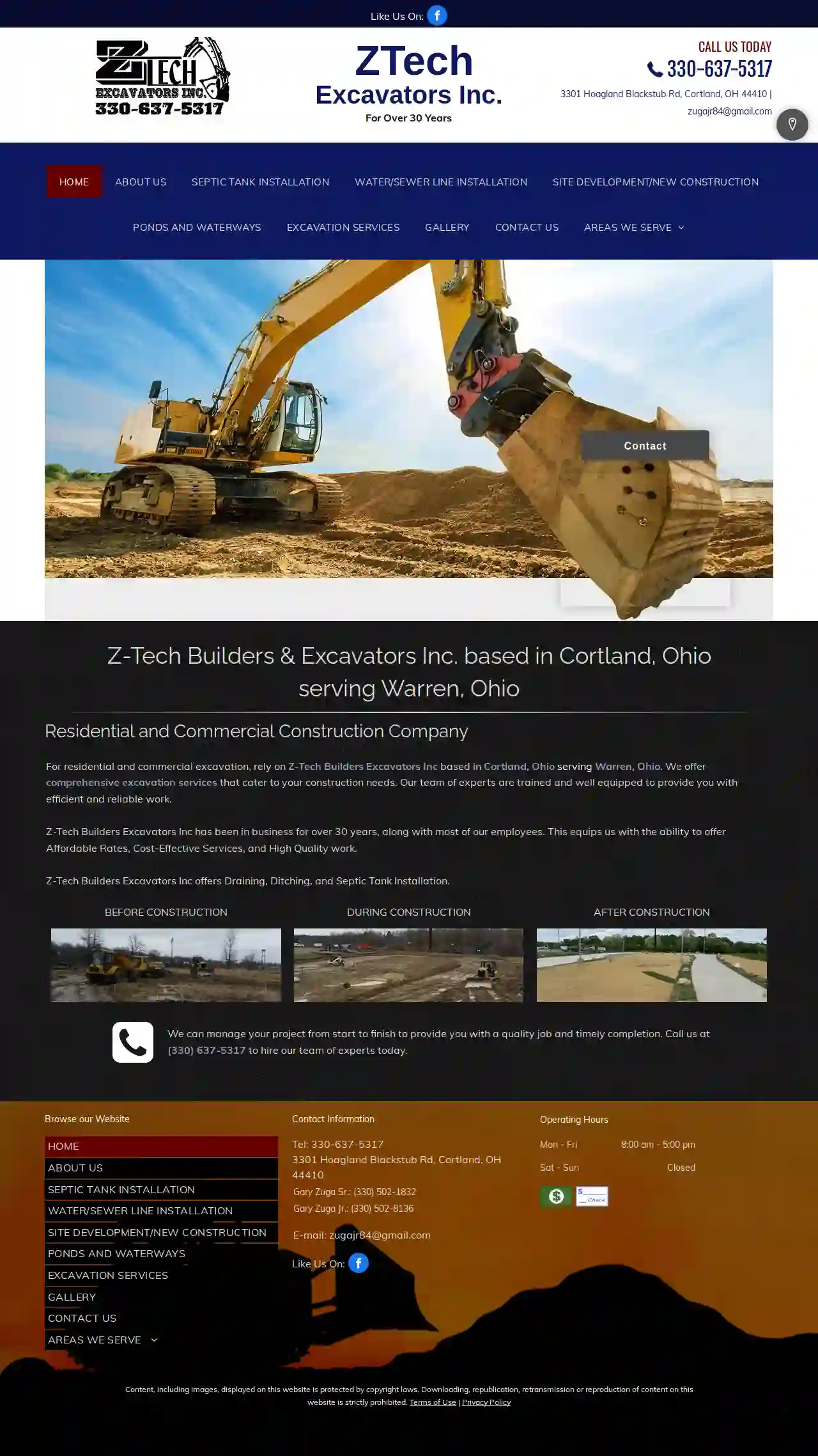
Z-Tech Builders Excavators Inc
4.410 reviews3301 Hoagland Blackstub Rd, Cortland, 44410, USAbout Z-Tech Builders & Excavators Inc. Z-Tech Builders & Excavators Inc. is a family owned and operated company, trusted by individuals and businesses in Trumbull County and surrounding areas. Our proprietors, Gary M Zuga Sr. and Gary M. Zugar Jr., are hands on in our business, and you can expect personalized service from all of our team. Let our 30 years of experienced work, work for you by employing our service. Assurances: Bonded Certified Insured Licensed Locally Owned Registered
- Services
- Why Us?
- Our Team
- Gallery
Get Quote
Summit Excavating
3.852 reviews3316 Grill Road, New Franklin, 44216, USSummit Excavating: Your Trusted Partner for Excavation and Septic Services Summit Excavating is a family-owned and operated excavation contractor serving residential and commercial clients throughout Northeast Ohio since 1979. We are dedicated to providing timely and professional services, taking the stress out of your major excavation projects. Whether you need septic pumping, a new septic tank, or any other excavation service, we are here to help. Our Commitment to Quality and Customer Satisfaction At Summit Excavating, we are committed to providing high-quality services and exceeding our customers' expectations. Our skilled team is dedicated to solving your problems correctly the first time, ensuring your complete satisfaction. We take pride in caring for our community and are committed to providing environmentally friendly and economical services. Our Services We offer a wide range of excavation and septic services, including: Soil Evaluation Septic Tank Demolition Risers on Tanks to Bring Up to Ground Level Septic Pumping & Sump Pump Lift Stations NPDES Systems Septic System Repairs Drip Disposal Systems & Spray Disposal Systems Septic Inspections, Dye Testing, Point of Sale (POS) Inspections Dig Basements & Dig Footers for House Additions Our Mission Our mission is to prevent you from experiencing water damage and to keep your groundwater supply fresh and clean. We offer flexible septic services, including one-time and routine services, to optimize your septic system's performance. When you choose our septic pumping services, you'll also receive a free backwash to ensure the sludge and scum are removed from your tank. Why Choose Summit Excavating? Licensed, Bonded, and Insured EPA Approved Experienced and Skilled Team Commitment to Quality and Customer Satisfaction Free Estimates Flexible Service Scheduling Friendly Post Card Reminders Sump Pump Replacement with Warranty
- Services
- Why Us?
- Gallery
Get Quote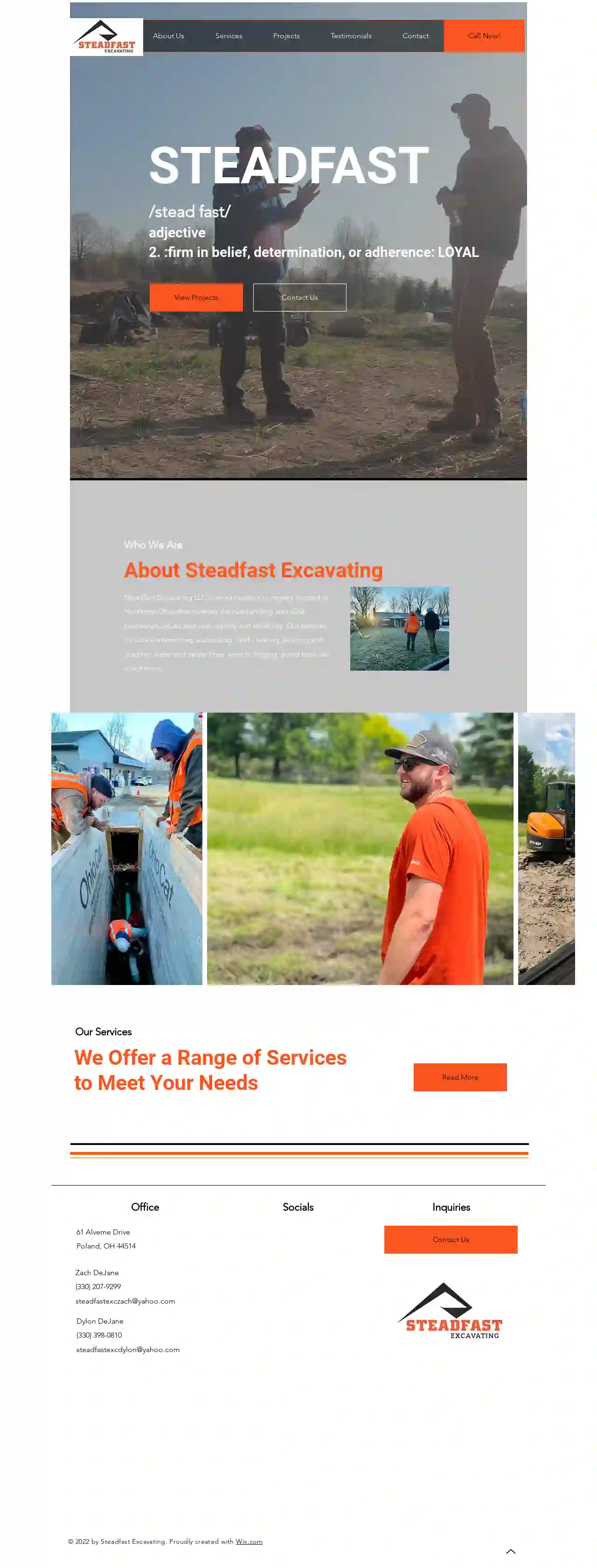
Steadfast Excavating
58 reviews61 Alverne Drive, Poland, 44514, USAbout Steadfast Excavating Steadfast Excavating LLC is an excavation company located in Northeast Ohio that services the surrounding area. Our company’s values start with quality and reliability. Our services include earthmoving, excavating, land clearing, leveling and grading, water and sewer lines, trench digging, pond work, so much more.
- Services
- Why Us?
- Our Team
- Gallery
Get Quote
Steve R Rauch, Inc.
3.537 reviewsDayton, USSince 1976, Steve R. Rauch Inc. has been providing services to Ohio. Our success is rooted in our commitment to delivering innovative solutions, working hard, maintaining honesty and fairness, and valuing every customer. These core values remain the foundation of our business, even after 40 years.
- Services
- Why Us?
- Our Team
- Gallery
Get Quote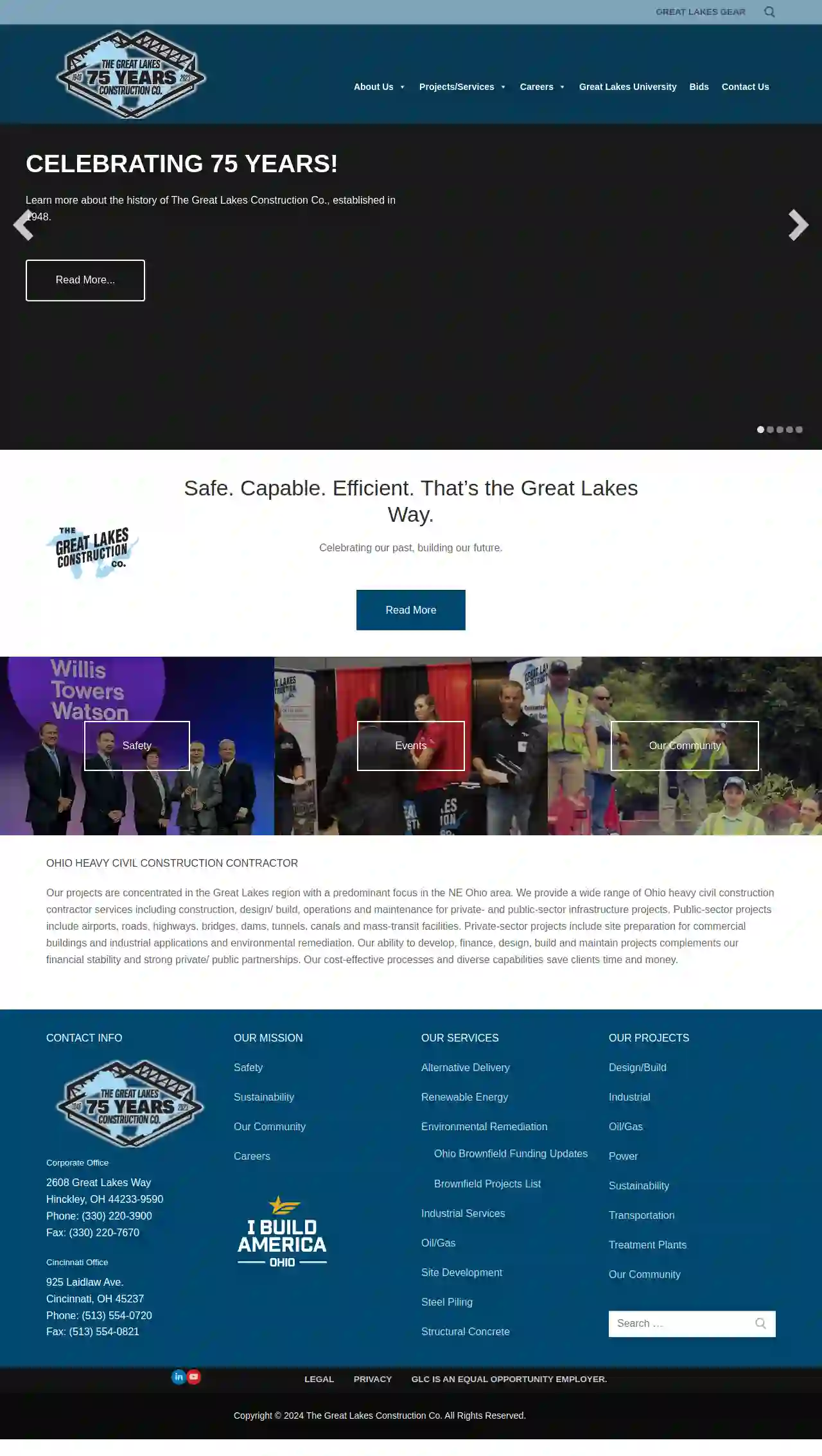
Great Lakes Construction
51 reviews2608 Great Lakes Way, Hinckley, 44233-9590, USCelebrating 75 Years! Learn more about the history of The Great Lakes Construction Co., established in 1948. Read More... The Great Lakes Construction Co. 75th Anniversary Timeline Explore the milestones and achievements that have shaped our journey. Read More... CO-OP/INTERNSHIP PROGRAM Great Lakes believes that Co-op programs serve as a great foundation for the student’s career path. Currently, 30 former co-ops have accepted permanent positions in our company including our President and Vice President of Operations. Read More... OHIO BROWNFIELD FUNDING UPDATES Ohio’s new operating budget calls for an investment of $500 million in brownfield revitalization, including $350 million dedicated to site cleanup and $150 million for demolition. Read More... CLINTON STREET BRIDGE REPLACEMENT Project 538-18 consisted of removing the existing 429 foot six-span concrete box beam bridge and replacing it with a 466 foot five-span continuous steel beam bridge. Read More... Safe. Capable. Efficient. That’s the Great Lakes Way. Celebrating our past, building our future. Read More Safety Safety is our top priority. We are committed to providing a safe and healthy work environment for our employees and the public. Events Stay up-to-date on our upcoming events and industry news. Our Community We are proud to be a part of the communities we serve. We are committed to giving back and making a positive impact. Ohio Heavy Civil Construction Contractor Our projects are concentrated in the Great Lakes region with a predominant focus in the NE Ohio area. We provide a wide range of Ohio heavy civil construction contractor services including construction, design/ build, operations and maintenance for private- and public-sector infrastructure projects. Public-sector projects include airports, roads, highways, bridges, dams, tunnels, canals and mass-transit facilities. Private-sector projects include site preparation for commercial buildings and industrial applications and environmental remediation. Our ability to develop, finance, design, build and maintain projects complements our financial stability and strong private/ public partnerships. Our cost-effective processes and diverse capabilities save clients time and money.
- Services
- Why Us?
- Gallery
Get Quote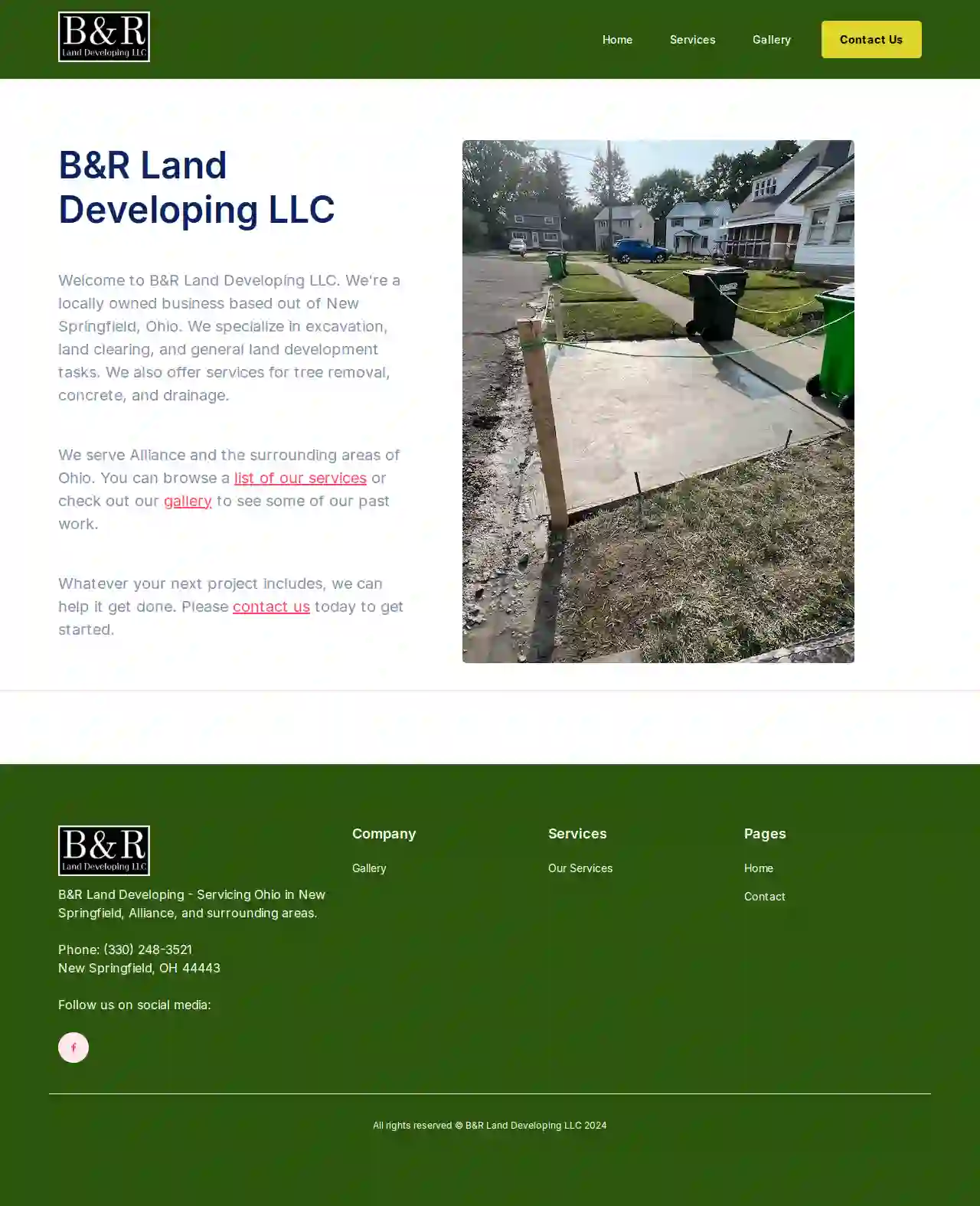
B&R Land Developing
53 reviewsNew SpringfieldOH, New Springfield, 44443, USWelcome to B&R Land Developing LLC We're a locally owned business based out of New Springfield, Ohio. We specialize in excavation, land clearing, and general land development tasks. We also offer services for tree removal, concrete, and drainage. We serve Alliance and the surrounding areas of Ohio. You can browse a list of our services or check out our gallery to see some of our past work. Whatever your next project includes, we can help it get done. Please contact us today to get started.
- Services
- Why Us?
- Gallery
Get Quote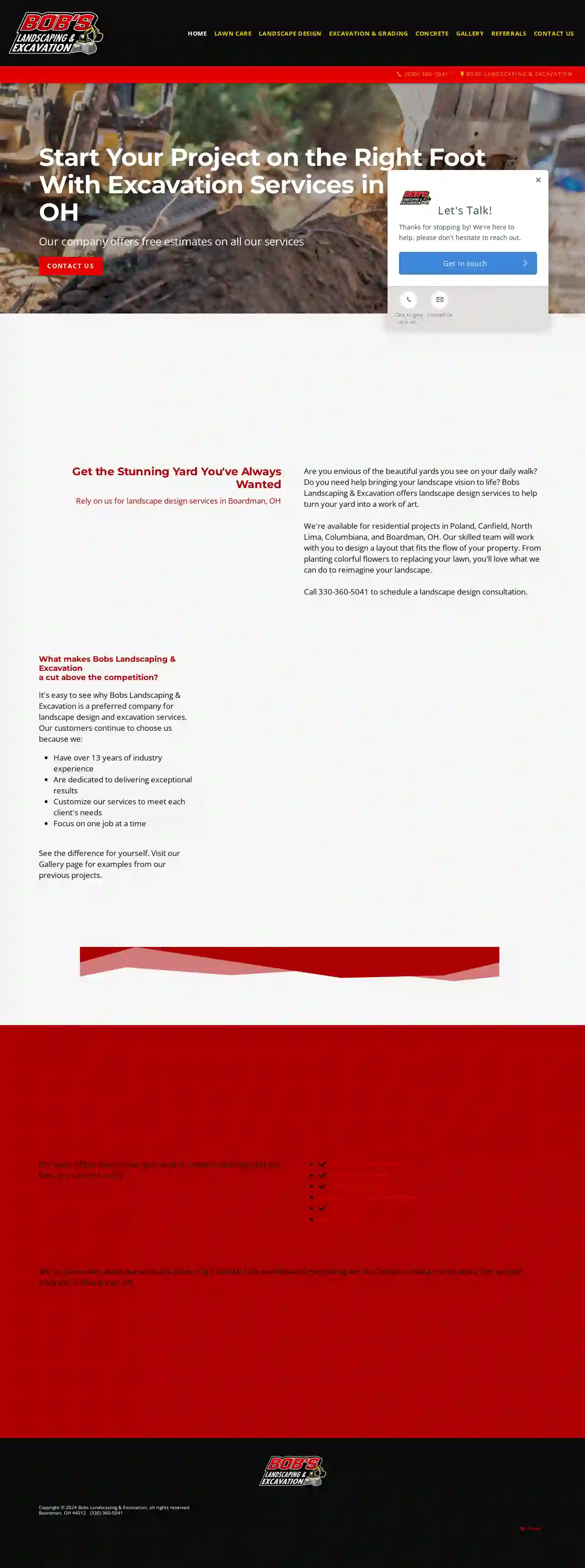
Bobs Landscaping & Excavation
510 reviewsBoardman, 44512, USBobs Landscaping & Excavation: Your One-Stop Shop for Outdoor Transformations At Bobs Landscaping & Excavation, we're passionate about creating beautiful and functional outdoor spaces that enhance your property and lifestyle. With over 13 years of experience serving the Boardman, OH area, we've built a reputation for delivering exceptional results and exceeding customer expectations. We offer a comprehensive range of services, including: Lawn care Landscape design Excavation and grading Concrete installation Our team of skilled professionals is dedicated to providing personalized service and customized solutions tailored to your specific needs. We take pride in our meticulous attention to detail and commitment to quality craftsmanship. Whether you're dreaming of a lush, green lawn, a stunning landscape design, or a new driveway, Bobs Landscaping & Excavation is your trusted partner for all your outdoor needs. Contact us today for a free estimate and let us help you transform your yard into a space you'll love.
- Services
- Why Us?
- Gallery
Get Quote
Over 22,076+ Excavation Pros onboarded
Our excavation contractors operate in Blacklick Estates and beyond!
ExcavationHQ has curated and vetted Top Excavation Contractors near Blacklick Estates. Find a trustworthy contractor today.
Frequently Asked Questions About Demolition Contractors
- Project Assessment: The demolition contractor evaluates the structure, site conditions, and project requirements.
- Permitting: Obtain necessary demolition permits from local authorities.
- Site Preparation: Secure the site, disconnect utilities, and remove any valuable or reusable items.
- Hazardous Material Abatement: Professionally remove asbestos, lead paint, or other hazardous materials if present.
- Demolition: Execute the chosen demolition method, bringing down the structure safely and efficiently.
- Debris Removal and Site Cleanup: Sort, process, and dispose of demolition debris responsibly. Clean up the site to prepare it for future use.
- Feasibility Studies: Assessing the viability and challenges of a demolition project.
- Demolition Planning: Developing demolition plans, including method selection, sequencing, and safety procedures.
- Permitting Assistance: Navigating the demolition permitting process and ensuring compliance with regulations.
- Hazardous Material Surveys: Identifying and managing hazardous materials, such as asbestos and lead paint.
- Cost Estimating: Providing accurate cost estimates for demolition services.
- Project Management: Overseeing the demolition process and ensuring it proceeds as planned.
- Clear the Site: Remove all furniture, appliances, personal belongings, and any valuable items from the structure.
- Secure the Perimeter: Fence off the demolition area to prevent unauthorized access and protect surrounding property.
- Disconnect Utilities: Arrange for the disconnection of electricity, gas, water, and other utilities servicing the building.
- Hazardous Material Abatement: If asbestos, lead paint, or other hazardous materials are present, have them professionally removed before demolition begins.
- Notify Neighbors: Inform your neighbors about the demolition schedule to minimize disruptions and address any concerns.
- Obtain Permits: Ensure all necessary demolition permits are in place before starting work.
What are the steps involved in a typical demolition process?
What is asbestos abatement?
What is the role of a demolition consultant?
How do I prepare my property for demolition?
What are the steps involved in a typical demolition process?
- Project Assessment: The demolition contractor evaluates the structure, site conditions, and project requirements.
- Permitting: Obtain necessary demolition permits from local authorities.
- Site Preparation: Secure the site, disconnect utilities, and remove any valuable or reusable items.
- Hazardous Material Abatement: Professionally remove asbestos, lead paint, or other hazardous materials if present.
- Demolition: Execute the chosen demolition method, bringing down the structure safely and efficiently.
- Debris Removal and Site Cleanup: Sort, process, and dispose of demolition debris responsibly. Clean up the site to prepare it for future use.
What is asbestos abatement?
What is the role of a demolition consultant?
- Feasibility Studies: Assessing the viability and challenges of a demolition project.
- Demolition Planning: Developing demolition plans, including method selection, sequencing, and safety procedures.
- Permitting Assistance: Navigating the demolition permitting process and ensuring compliance with regulations.
- Hazardous Material Surveys: Identifying and managing hazardous materials, such as asbestos and lead paint.
- Cost Estimating: Providing accurate cost estimates for demolition services.
- Project Management: Overseeing the demolition process and ensuring it proceeds as planned.
How do I prepare my property for demolition?
- Clear the Site: Remove all furniture, appliances, personal belongings, and any valuable items from the structure.
- Secure the Perimeter: Fence off the demolition area to prevent unauthorized access and protect surrounding property.
- Disconnect Utilities: Arrange for the disconnection of electricity, gas, water, and other utilities servicing the building.
- Hazardous Material Abatement: If asbestos, lead paint, or other hazardous materials are present, have them professionally removed before demolition begins.
- Notify Neighbors: Inform your neighbors about the demolition schedule to minimize disruptions and address any concerns.
- Obtain Permits: Ensure all necessary demolition permits are in place before starting work.